Leonidas is a familiar name to chronograph aficionados, but the history of the company is not well-documented. There was never a story on Leonidas in a publication like Europa Star, Watchtime, or QP, and I could locate no enthusiast communities or fan sites. But the story of Leonidas is long and interesting, dating back to 1841 and connecting two great names in Swiss watchmaking, Bourquin and Jeanneret, and the company was linked to both Heuer and Berna. Read on to learn the surprising and complicated history of Leonidas and the “Beau-Site” factory in Saint-Imier that they called home.

Les Grandes Fabriques d’Horlogerie de Saint-Imier
This is part of a series of posts about Les Grandes Fabriques d’Horlogerie de St Imier. Due to the detailed and complicated research required, it will likely take months to complete, so please subscribe to the Grail Watch newsletter to be kept up to date!
- Introducing the great watchmaking factories of Saint-Imier
- The Evolution of Watchmaking Architecture: Rue des Roses 2 and Rue du Stand 35
- Excelsior Park: Usine du Parc
- The Rise of Mass-Produced Watches at Les Longines, Saint-Imier
- From Atelier to Factory: Usine Centrale, Saint-Imier
- Droz and Degoumois: Berna Watch Factory
- Rue de la Clef 44: Fritz Moeri’s Moeris
- The Rise and Fall of Leonidas and the Beau-Site Factory
- Gygax & Meyer
- Schweingruber
- Smaller Factories of Saint-Imier
Each of these factories has a story to tell, both about the products produced there and the watchmaking industry at the turn of the 20th century. We will explore the transition from home to factory, the rapid rise of corporations, the transition from water and steam to electric power, the great Jeanneret family, and more!
Leonidas: From Fine Watches to Cheap Timers

Leonidas was a successful maker of chronographs in the first half of the 20th century, but there is much more to this storied company. It traces its roots to 1841, when Julien Bourquin began making high-end watches in Saint-Imier, many of which found their way to the Russian market around the turn of the century. The Leonidas factory at Beau-Site was also the home of Berna and Heuer in the second half of the century.
The story of Leonidas begins with Julien Bourquin, who established a workshop for watches, silverware, and jewelry in one of the most prestigious buildings in Saint-Imier in 1841. This was quite early in the history of watchmaking in the town, and Bourquin was a pillar of the trade in the 1850s alongside Auguste Agassiz, ancestor of Longines.
The Bourquin era was marked by a focus on fine watches, with Julien’s son Ferdinand introducing the Leonidas name in Poland and Russia. The company did produce chronographs and stopwatches at this time, but these were celebrated as complications, not utilitarian devices. It was only in the 1890s that Ferdinand Bourquin introduced the cheaper “La Populaire” line in an attempt to expand production. The company’s continued reliance on high-end product would end the Bourquin era, as the collapse of their primary bank led to liquidation of the company and its products.
The next era of Leonidas was overseen by Constant Jeanneret-Droz and his son Charles and Ernest. Constant purchased the Leonidas Watch Factory out of bankruptcy in 1911 and Charles would lead it and Berna, which he acquired in 1930, through the post-war period. Leonidas remained a maker of fine watches in gold cases throughout this period, and the chronographs produced by the Jeanneret-owned firm are under-appreciated today. But the fine chronograph market was not enough to sustain so many companies in the 1950s, and Leonidas was increasingly reliant on inexpensive stopwatches by 1960. This strategy worked, with Leonidas quickly becoming the leading vendor of Swiss stopwatches in the United States.
This leads to the era of Heuer-Leonidas, which began in 1964 as the young Jack W. Heuer purchased Leonidas just a year after taking over his family’s firm. He leveraged Leonidas’ strength in stopwatches for the American market to raise funding for an epic battle to produce an automatic chronograph. The Leonidas brand was quickly relegated to lower-end products, and the Beau-Site factory in Saint-Imier was pushed to the background. Yet Charles Jeanneret remained deeply involved and continued producing the Berna brand through the 1970s. Leonidas did not survive the financial crisis of the 1970s and the rise of quartz stopwatches in the 1980s and the brand was retired after Nouvelle Lemania and then TAG took over in 1982 and 1985, respectively.
In 2015, a new Leonidas Watch company was created, and they are working to re-establish the brand in Swiss mechanical watches.
Now, let’s dive deep into the history of Bourquin, Leonidas, and Beau-Site.
Julien and Ferdinand Bourquin

Julien Bourquin began his career as a watchmaker in Saint-Imier in 1841 and his workshop is noted to be located on Grande Rue in 1865. In 1867, Bourquin is specifically noted as maker of silverware and jewelry as well as watches (“et arjenterie et bijouterie”), suggesting that Bourquin was among the higher-end shops in the town.
The location of Bourquin’s workshop is clarified in 1867 as Grande Rue 6. This was one of the most important blocks in the city, directly across from the Collégiale de Saint-Imier near the Place du Marchè. It is two doors down from the Hôtel de Ville, where the town’s anarchist watchmakers came together in 1872 to oppose the rise of Marxism and centralized authority. The building still stands today, and the block remains one of Saint-Imier’s best.

As Bourquin’s business prospered in his old age, he would have watched the rise of a new generation of Saint-Imier watchmakers rise, including Ernest Francillon in the 1860s and Jules-Frédéric Jeanneret and Alcide Droz in the 1870s. And he would have watched as the large factories of Droz, Ernest Degoumois, and Jacques David transformed manufacturing in the 1880s. He may have even known a young local watchmaker who founded the company that would buy his own in 1964: Edouard Heuer.
After Julien’s death in the 1880s the workshop was taken over by his son, Ferdinand Bourquin (1850-1905). He had greater ambition than his father and began expanding and modernizing the the firm. By 1895, Bourquin was making watches using the La Populaire brand, including smaller models for ladies as well as simple chronographs and stopwatches.
Ferdinand Bourquin had spent some years in Russia, selling watches to the aristocracy along with Paul Buhré, H. Moser & Cie., and Breguet, and focused on fine watches in gold cases for that market. He established workshops in Warsaw, Poland and St. Petersburg and managed the company from Saint-Imier.
Seeking a larger and more modern production space, Ferdinand Bourquin moved to the Rue des Roses 2 factory alongside Ernest Degoumois in 1901. But this was only temporary, as Bourquin was constructing a large new facility in the vacant Beau-Site area just northeast of town. Ferdinand Bourquin would not live to see the new facility completed, however, as he died of a heart attack while walking up to the Mont Soleil funicular on March 5, 1905.
In addition to “La Populaire”, Bourquin registered the Léonidas brand by 1902. Accompanied by a line drawing of a naked Spartan, the Léonidas name was used on the higher-end products of the Beau-Site factory. Bourquin produced a full line of watches, including a patented chronograph, stopwatch, and quality anchor movements measuring 13, 18, and 19 ligne. Successive 1902 advertisements show a pocket stopwatch with a 30 minute counter at 12:00 and a more conventional chronograph watch with small seconds at 6:00 and a 30 minute counter at 12:00. These were covered by Swiss patents 28,245 and 33,001.
This new factory at Rue de Beau-Site 6 would become known as the Léonidas Watch Factory by 1907, reflecting the name used on some of its products. By this time it was managed by Jules Javet, a name that would figure prominently in the next chapter of the story. Léonidas was very successful in the first decade of the 20th century, increasingly focusing on sports timing. This was exemplified by Auguste Fiedler’s iconic poster art, shown below.


The Fall of Léonidas

Leonidas faced sales pressure as troubles in Russia mounted, and the company was too reliant on expensive and low-volume gold watches. The Saint-Imier factory had taken on a large line of credit with the Banque Populaire de Bienne, making Léonidas one of the largest clients of that bank along with fellow watch manufacturer Rénold Kocher of Bévilard and the Martini automobile factory of Saint-Blaise.
In 1910, the bank of Neuchâtel called in a loan owed by Martini, leading them to scramble for capital. This set off a cascade of failures at the Bienne bank, which was unable to extend credit to Kocher and Léonidas. Jules Javet’s attempts to maintain production at the Beau-Site factory backfired, since he did not reveal the full extent of the company’s troubles. Javet and Kocher were arrested in January, 1911, on charges of embezzlement and fraud. Facing a shortage of nearly 4 million francs, the director of the Bienne bank was also arrested for fraud.
The decision was made to liquidate the Léonidas Watch Co. in March, 1911. Their stock in Russia and Poland was sold and the offices closed by Mr. Meyer of Paul Moser & Cie. of Bienne. Because Meyer prioritized Russian creditors, little of this money was returned to Switzerland. And the liquidation was quite controversial due to the low prices achieved there.
Unable to continue operation, the remaining movements and cases at the Beau-Site factory were offered for sale. The factory, brand, and Bourquin home were auctioned on October 14, 1911.
Jules Javet, Rénold Kocher, and Banque Populaire de Bienne director Mr. Jenni were released from jail and all charges dropped in 1912. Creditors of the bank were paid back roughly 65% of their shares.
Leonidas and the Jeanneret Family
Constant Jeanneret-Droz (1858-1916) was one of three successful sons of Saint-Imier watchmaker Jules-Frédéric Jeanneret. Albert, Constant, and Henri Jeanneret founded the company that would become Excelsior Park at Usine du Parc in Saint-Imier in 1889, and Albert founded the predecessor to Moeris before his 1899 death. Constant set up his own watchmaking company, Manufacture Junior, by 1902, leaving Excelsior Park to Henri Jeanneret-Brehm by 1905.

Junior was a successful brand, and the Jeanneret family dominated watchmaking in Saint-Imier in the early 20th century. These family and professional connections allowed Constant Jeanneret-Droz to put together a consortium of buyers for Léonidas in 1911. But Constant surprised everyone when he outbid his own group, picking up Leonidas for a paltry 65,200 francs at that October, 1911 auction.
In this way, Leonidas’ Beau-Site became the sixth Saint-Imier watch factory associated with the Jeanneret family at that time: It was just up the hill from Usine Centrale and the family workshop on Rue de Tramelan and across town from the “Le Parc” cluster of Constant’s own Junior factory, Fritz Moeri’s factory, and Usine du Parc. Given the free exchange of designs, patents, and even workers among the Jeanneret clan, they must have seemed to be everywhere at the time.
Leonidas Watch Factory SA was officially reorganized in 1912, with Junior replacing La Populaire as the lower-level brand. Leonidas (increasingly spelled without the acute over the “e”) produced “montres de précision” in gold, silver, steel, or nickel cases, including extra-thin watches. The company now offered wristwatches as well, reflecting the trends of the day. We also see Leonidas signed stopwatches and chronographs and more ordinary Junior pocket watches.


Constant’s son Charles Jeanneret (1892-1979) took over the firm later in 1912 and would lead the company for decades, with his brother Ernest as technical director. They consolidated production at Beau-Site and soon expanded to a second building next door. Although not as large as Le Parc, Les Longines, or even the old Berna factory, Beau-Site 6 and 8 remain key to Saint-Imier manufacturing to this day.

Leonidas and Berna
Now a respected businessman, Charles Jeanneret was brought in to oversee the bankruptcy of the Berna Watch Co. across town. It was re-registered as “Charles Jeanneret, Fabrique de Montres Berna” on May 18, 1928, allowing him to wind down the operation. No buyer was found for the large but aging factory at Rue des Marronniers 20, but Charles Jeanneret decided to re-establish the brand in the new building at Beau-Site 8, next to the historic Léonidas factory. On May 5, 1930, a new Berna SA was established with Charles Jeanneret as the administrator.
The Berna brand would quickly replace Junior as the sister to Léonidas, which increasingly focused on chronographs and stopwatches but still produced fine time-only watches as well.


Leonidas soon adopted the “spare parts container” concept patented by Excelsior Park, another Jeanneret factory across town. There is some indication that Robert-Henri Jeanneret, who ran Excelsior Park after his father’s death in 1932, was greatly displeased to see his cousins copying his innovation in their competing watches. This would have caused a great disruption in the town, especially since the Jeanneret family factories had shared so much in the previous generation.
It appears that the design and construction of the movements was outsourced to Vénus and A. Schild, though they were customized to include a glass lid over a well for spare springs and so on. Given the small size of the Beau-Site factory, it is unlikely that Leonidas could have produced ebauches there, let alone assortments, wheels, and the like. Interestingly, some of these movements were shared with Bienne rival Heuer, which would take over Leonidas in 1964!


The advent of wrist chronographs in the 1940s was a boon to Leonidas, which produced some of its greatest models immediately after World War II. Among these were a range of chronographs, including the gold full-calendar model shown at right. Most of these appear to use Valjoux movements, including the famous Cal. 22 and Cal. 72, which was likely used in the model pictured.
But Leonidas also offered simple and complicated watches for men and ladies, including a full calendar with moon phase. These appear to use Felsa and ETA movements, with the triple-date moon phase using ETA’s Cal. 1100.


Throughout this period, Leonidas, Berna, and High-Life were all produced at the Beau-Site 8 factory. As we recently discussed, Berna was a pioneer in waterproof watches and this is evident in their advertising through the 1960s. But Leonidas faced increasing difficulties as the “chronograph boom” went bust. They quickly abandoned Valjoux movements for cheaper Landeron and Aurore-Villeret parts, and developed their own cheap stopwatch line. This proved to be a winning formula, and Leonidas rapidly became the top supplier of stopwatches in the important American market. Although not as glamorous as the gold chronographs of the 1950s, Leonidas was a strong money maker once again.
Heuer-Leonidas
On January 1, 1964, Heuer and Leonidas merged. Jack W. Heuer had taken over his family’s firm just a year earlier, and saw their old rival’s success in America as an opportunity. His move proved successful, and the new firm, called Heuer-Leonidas, rose rapidly in the world market. The success of Heuer in auto racing and Leonidas in sports timing unlocked the cash for the company to develop the groundbreaking Chronomatic movement in partnership with former rival Breitling.
Charles Jeanneret remained on the board of Heuer-Leonidas, but production was shifted away from Beau-Site. For a time, the factory was known only as the Berna Watch Co., which was not included in the merger. But Heuer-Leonidas maintained an interest in Saint-Imier and continued to use the building for Leonidas stopwatches.
Although Leonidas offered a full range of watches before the merger, the brand was only used for stopwatches afterwards. Through the 1970s, Heuer would be the main brand for the combined company, and Leonidas’ fortunes failed in the face of stopwatches from Japan.
By the 1970s, the old building at Beau-Site 8 was commonly called the Heuer-Leonidas factory. But Heuer-Leonidas faced difficulties in the 1980s and was taken over by the management of Nouvelle Lemania in 1982. Heuer became associated with Techniques d’Avant Garde (TAG) in 1985, becoming TAG Heuer shortly after. The Leonidas brand was effectively discontinued at this point, and the Saint-Imier factory was closed.
Leonidas and Beau-Site Today
After Heuer-Leonidas became TAG Heuer, the Saint-Imier factory at Beau-Site was no longer needed. It was eventually taken over by a metalworking firm, Galvarex SA. A fire in 2014 gutted the building, but it was re-built and remains in use today.
The Leonidas brand was resurrected by a new company in 2015, but they have struggled to gain notice in the crowded vintage market.
The Grail Watch Perspective: The Struggle of Leonidas
Like their cross-town cousin and rival, Excelsior Park, Leonidas exemplifies the rise and fall of the chronograph market in the 20th century. But Leonidas was better able to adapt in the 1960s, gaining market share with cheap stopwatches even as others struggled. The success of Leonidas helped save Heuer after their 1964 merger, but this historic name was soon relegated to cheaper watches and retired.
Leonidas watches are not widely collected today, and this offers some interesting opportunities for collectors. Triple-date moon phase watches with Cal. 1100 are widely available for a few thousand dollars, and even the Valjoux 72 and 88 chronographs are sometimes priced under $5,000. And the pioneering and under-appreciated Easy Rider chronograph can often be found under $1,000. Given the current interest in vintage chronographs, it is surprising that Leonidas has not attracted more attention from today’s collectors!



References
Charles Jeanneret

Charles Jeanneret was the son of Constant Jeanneret-Droz and Jenny Fanny Droz-dit-Busset. He was born June 2, 1892 and died May 8, 1979 in La Chaux-de-Fonds. Charles graduated from l’Ecole Supérieure de Commerce de Neuchâtel and took over the Léonidas watch factory after his father’s death, with his brother Ernest Jeanneret. He married Marthe-Angélique Junod-Dambach.
Charles served as Municipal Councillor of Saint-Imier, Councillor for the Bernese Radical States from 1959 through 1967, and was elected to the Grand Council in 1958. He was opposed to separation of the Bernese Jura from the Canton of Bern and pushed for reconciliation between the parties when the Jura state was established, even after his home on Mont-Soleil was damaged in an attack in 1963.
Throughout his career, Charles Jeanneret focused primarily on the interests of the watchmaking industry. He was a member of the steering committee for the Bernese Cantonal Association of Watch Manufacturers from 1919 and became president of the association later. He was also a member of the Fédération Suisse des Associations de Fabricants d’Horlogerie (FH) and the Chambre Suisse de l’Horlogerie. Charles was keenly involved in Heuer-Leonidas along with the younger Jack W. Heuer, and maintained his own Berna Watch Company through the 1970s.
See Also: Historisches Lexicon der Schweiz HLS: Charles Jeanneret



Commercial Listings
We can track the progress of Bourquin, Leonidas, and Berna through these listings in Indicateur Davoine.















Banque Populaire de Bienne
The collapse of the Banque Populaire de Bienne is told in these news stories from 1910 through 1912.


















Heuer-Leonidas
The story of Heuer-Leonidas is not as well documented but many primary source materials were discovered.














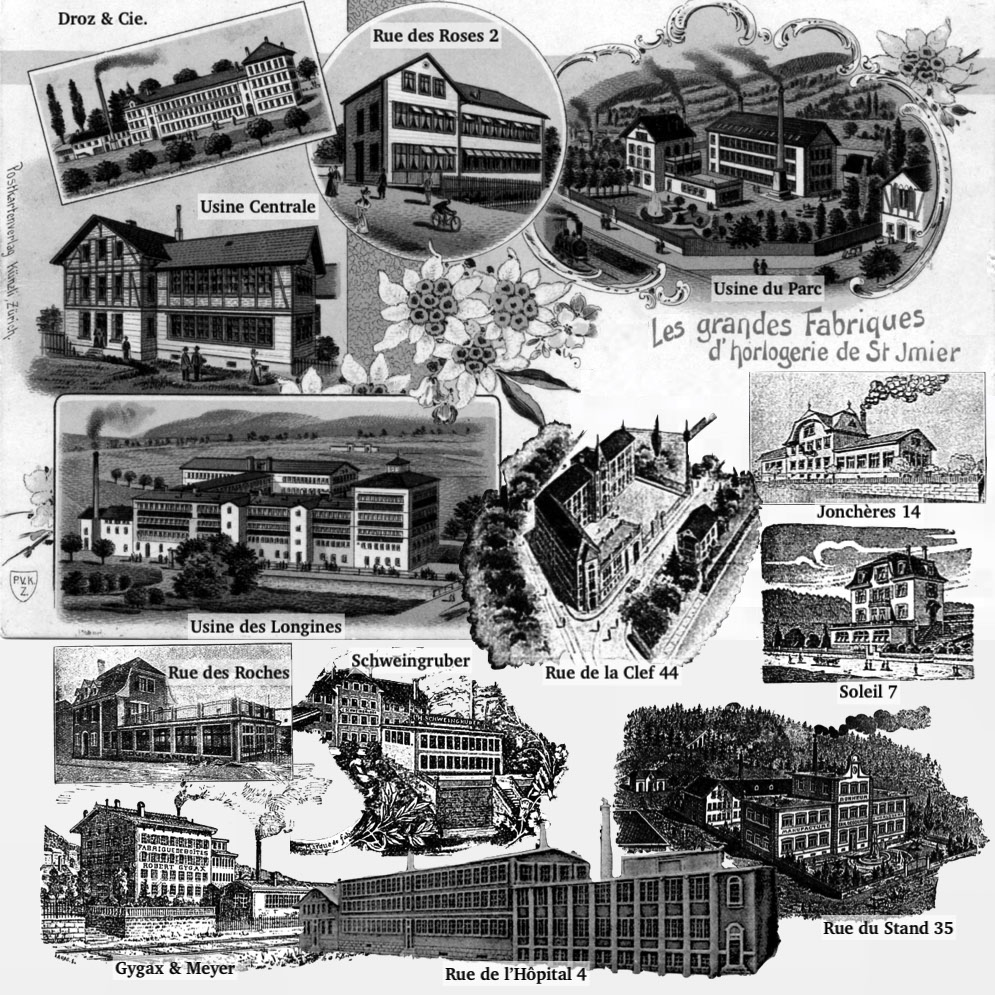
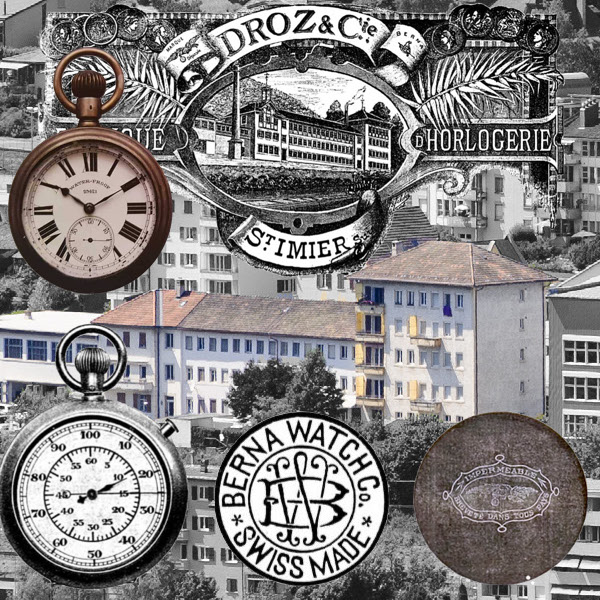

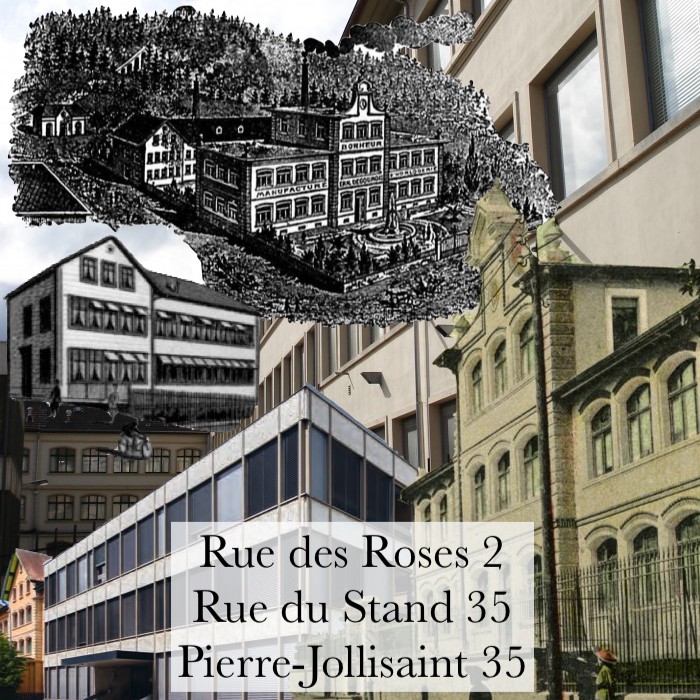
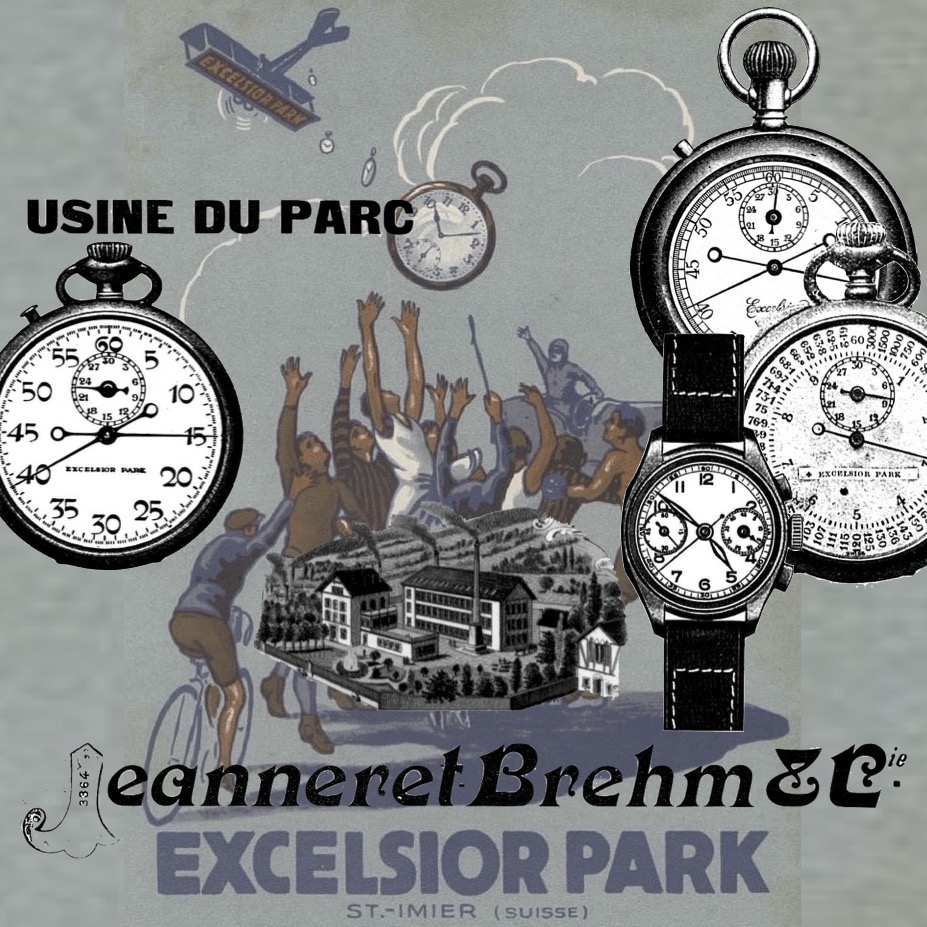
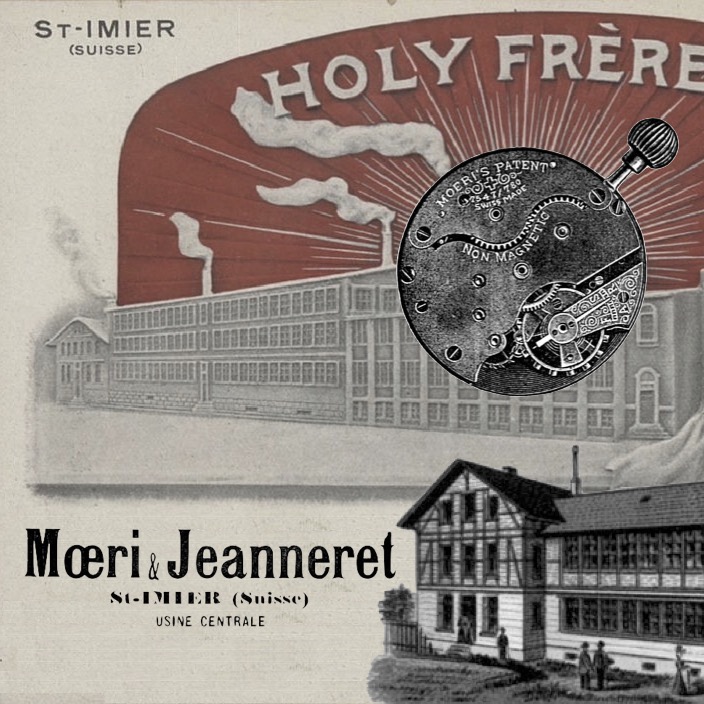
Great article. Thanks for sharing this. I’m waiting for your research on IWC and the Portugieser in particular. I’m sure it will also cover G Blumlein. Thanks
Thanks for the kind words! I tend to write about whatever I am interested in at the moment, and definitely do have a lot more to say on IWC and Blumlein. But right now I’m in this inter-war watch rabbit hole!
Bonjour,
Je vais sans doute acheter une montre LEONIDAS de 1950.
Comment puis-je savoir si elle est vraie et d’époque ?
Merci pour votre réponse.
Didier